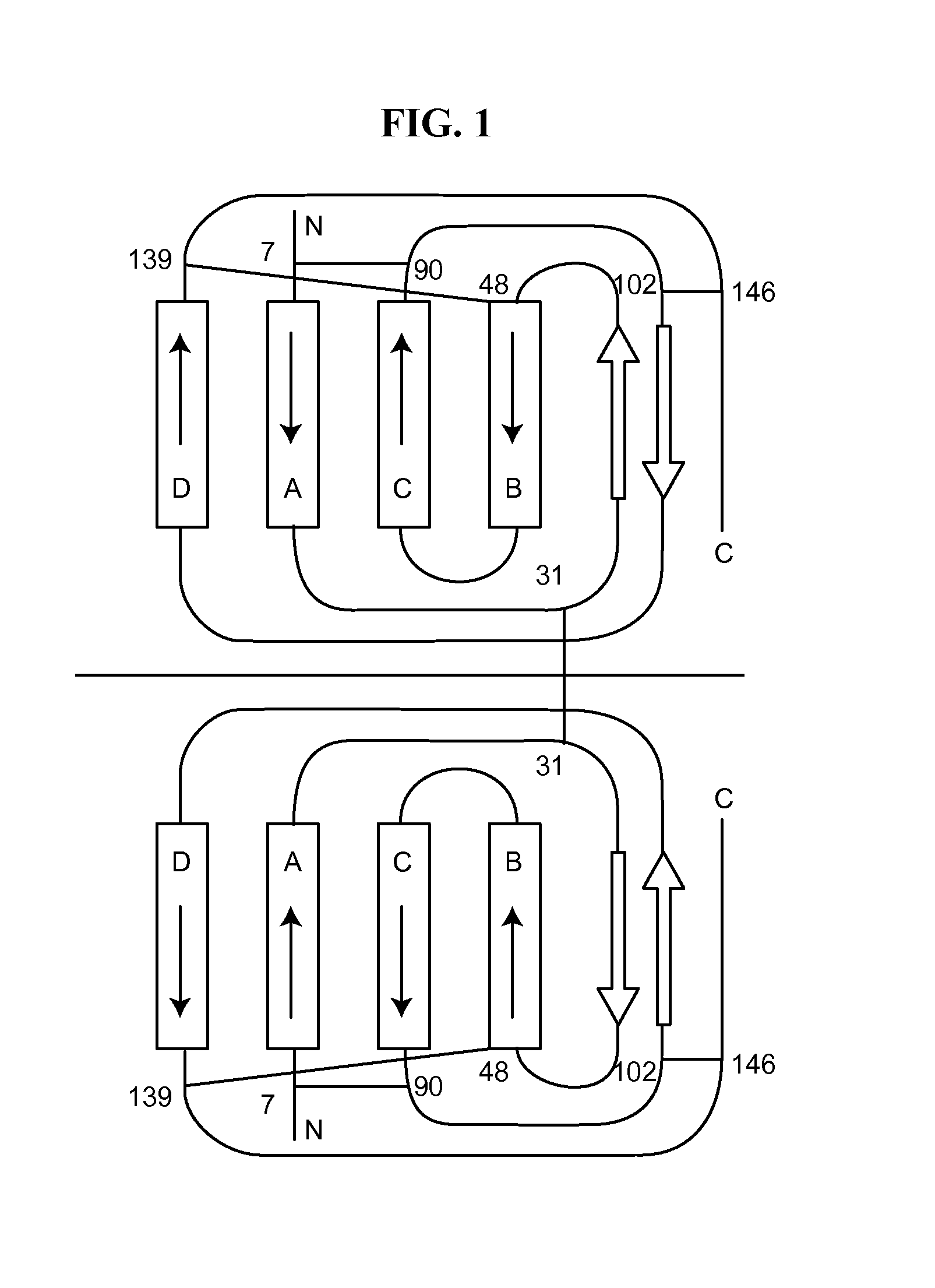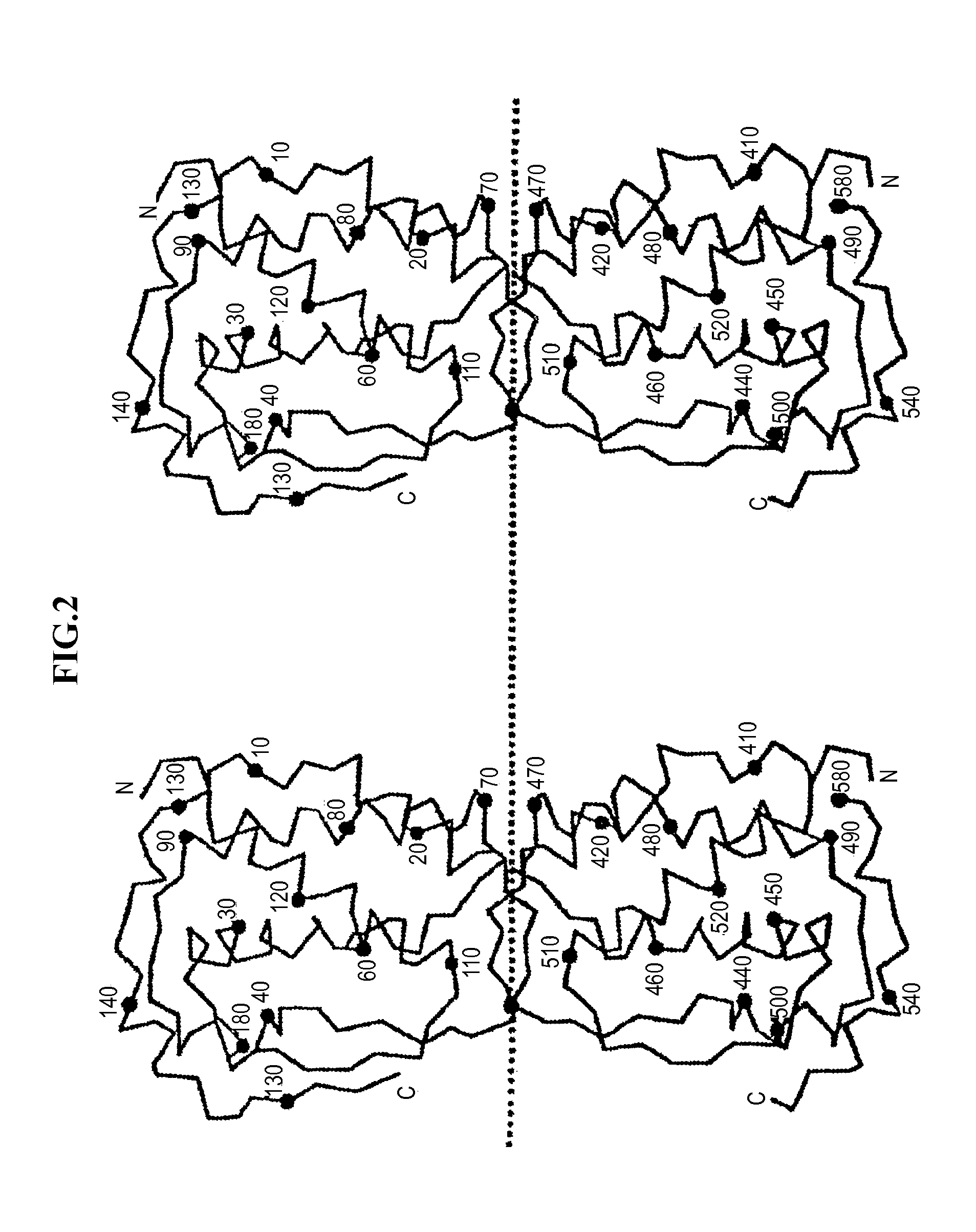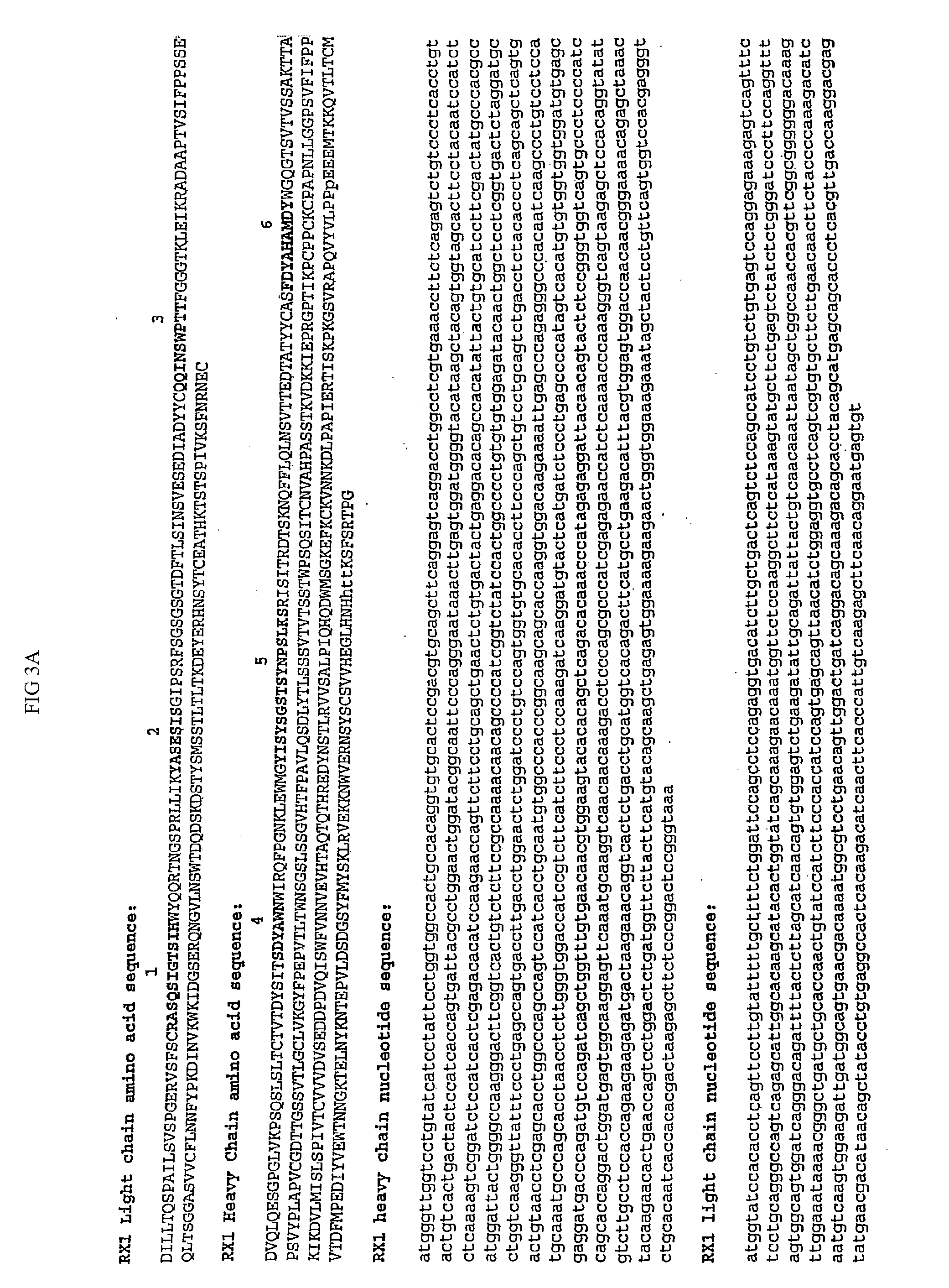Soluble human m-csf receptor and uses thereof
a human mcsf receptor and soluble technology, applied in the field of soluble human mcsf receptors, can solve the problems of myocardial infarction or stroke, angina and other symptoms of vascular occlusion,
- Summary
- Abstract
- Description
- Claims
- Application Information
AI Technical Summary
Benefits of technology
Problems solved by technology
Method used
Image
Examples
example 1
[0312]This example shows that M-CSF antibodies RX1 and 5A1 are species specific and that antibodies RX1, MC1, and MC3 neutralize human M-CSF activity. RX1 is a commercially sold antibody that was available more than a year prior to the filing date of this application. Exemplary commercial sources include, but are not limited to, mouse anti-human M-CSF monoclonal antibody clones 116, 692, and 21 (Anogen); anti-human M-CSF antibody clones 21113.131, 26730, and 26786 (R & D Systems, Inc.); and anti-human M-CSF antibodyclone M16 (Antigenix America, Inc.).
[0313]To test the neutralizing activity of RX1 and 5A1, a proliferation assay of M-NFS-60 cell line was used (American Type Culture Collection Accession No. CRL-1838, available from ATCC in Rockville, Md., USA, derived from a myelogenous leukemia induced with the Cas-Br-MuLV wild mouse ecotropic retrovirous, responsive to both interleukin 3 and M-CSF and which contain a truncated c-myb proto-oncogene caused by the integration of a retro...
example 2
[0315]This example sets out a procedure for humanization of the RX1 antibody. 5H4, MC1 and MC3 are humanized using similar procedures.
[0316]Design of Genes for Humanized RX1 Light and Heavy Chains
[0317]The nucleotide and amino acid sequence for murine RX1 are set forth in FIG. 3B. The sequence of a human antibody identified using the National Biomedical Foundation Protein Identification Resource or similar database is used to provide the framework of the humanized antibody. To select the sequence of the humanized heavy chain, the murine RX1 heavy chain sequence is aligned with the sequence of the human antibody heavy chain. At each position, the human antibody amino acid is selected for the humanized sequence, unless that position falls in any one of four categories defined below, in which case the murine RX1 amino acid is selected:
[0318](1) The position falls within a complementarity determining region (CDR), as defined by Kabat, J. Immunol., 125, 961-969 (1980);
[0319](2) The human...
example 3
[0341]This example describes cloning and expression of Human Engineered™ RX1 antibodies, as well as purification of such antibodies and testing for binding activity. Human Engineered™ 5H4, MC1, and MC3 antibodies are prepared using similar procedures.
[0342]Design of Human Engineered™ Sequences
[0343]Human Engineering™ of antibody variable domains has been described by Studnicka [See, e.g., Studnicka et al. U.S. Pat. No. 5,766,886; Studnicka et al. Protein Engineering 7: 805-814 (1994)] as a method for reducing immunogenicity while maintaining binding activity of antibody molecules. According to the method, each variable region amino acid has been assigned a risk of substitution. Amino acid substitutions are distinguished by one of three risk categories: (1) low risk changes are those that have the greatest potential for reducing immunogenicity with the least chance of disrupting antigen binding; (2) moderate risk changes are those that would further reduce immunogenicity, but have a ...
PUM
| Property | Measurement | Unit |
|---|---|---|
| dissociation equilibrium constant | aaaaa | aaaaa |
| dissociation equilibrium constant | aaaaa | aaaaa |
| dissociation equilibrium constant | aaaaa | aaaaa |
Abstract
Description
Claims
Application Information
 Login to View More
Login to View More - R&D
- Intellectual Property
- Life Sciences
- Materials
- Tech Scout
- Unparalleled Data Quality
- Higher Quality Content
- 60% Fewer Hallucinations
Browse by: Latest US Patents, China's latest patents, Technical Efficacy Thesaurus, Application Domain, Technology Topic, Popular Technical Reports.
© 2025 PatSnap. All rights reserved.Legal|Privacy policy|Modern Slavery Act Transparency Statement|Sitemap|About US| Contact US: help@patsnap.com



